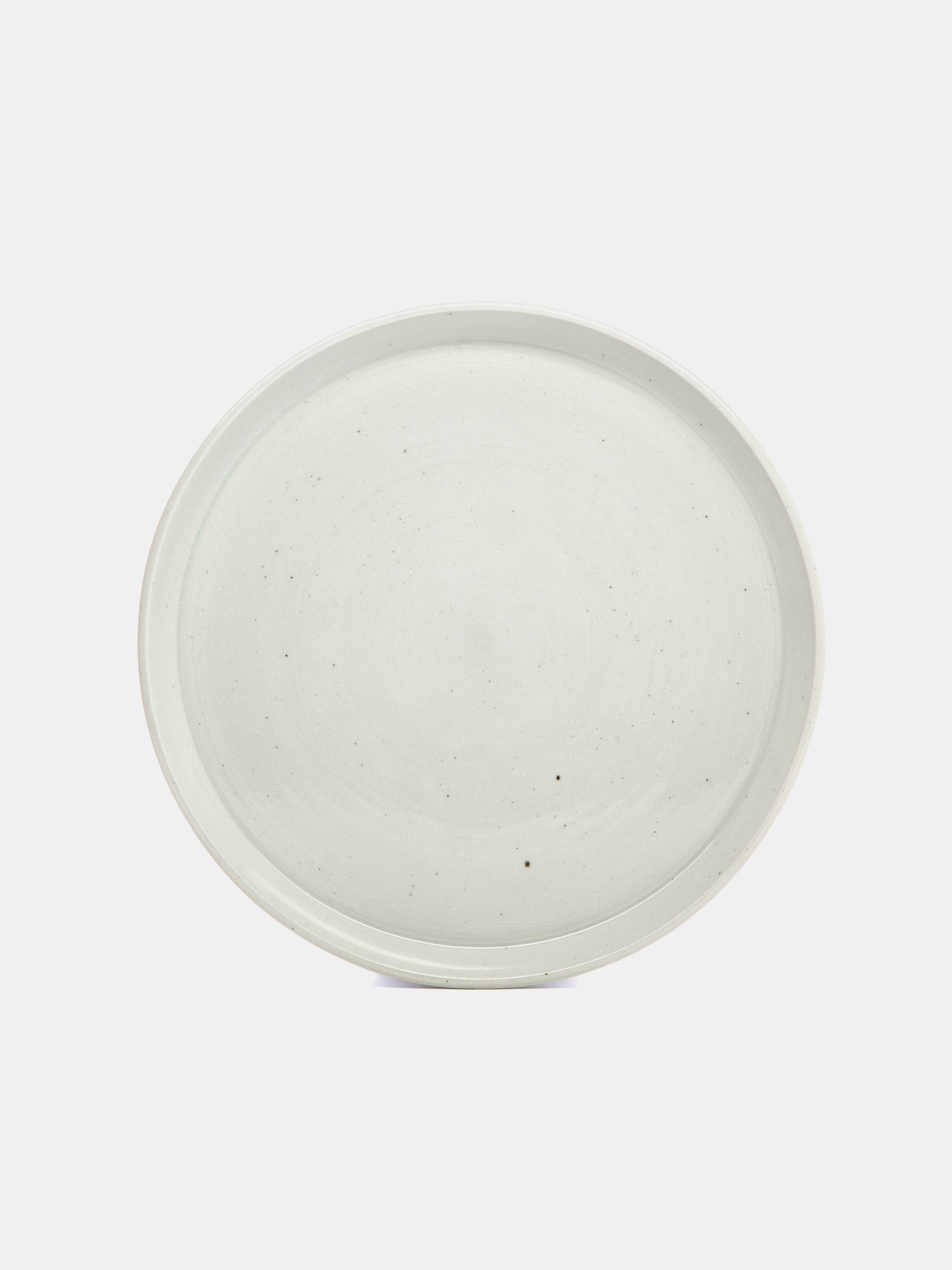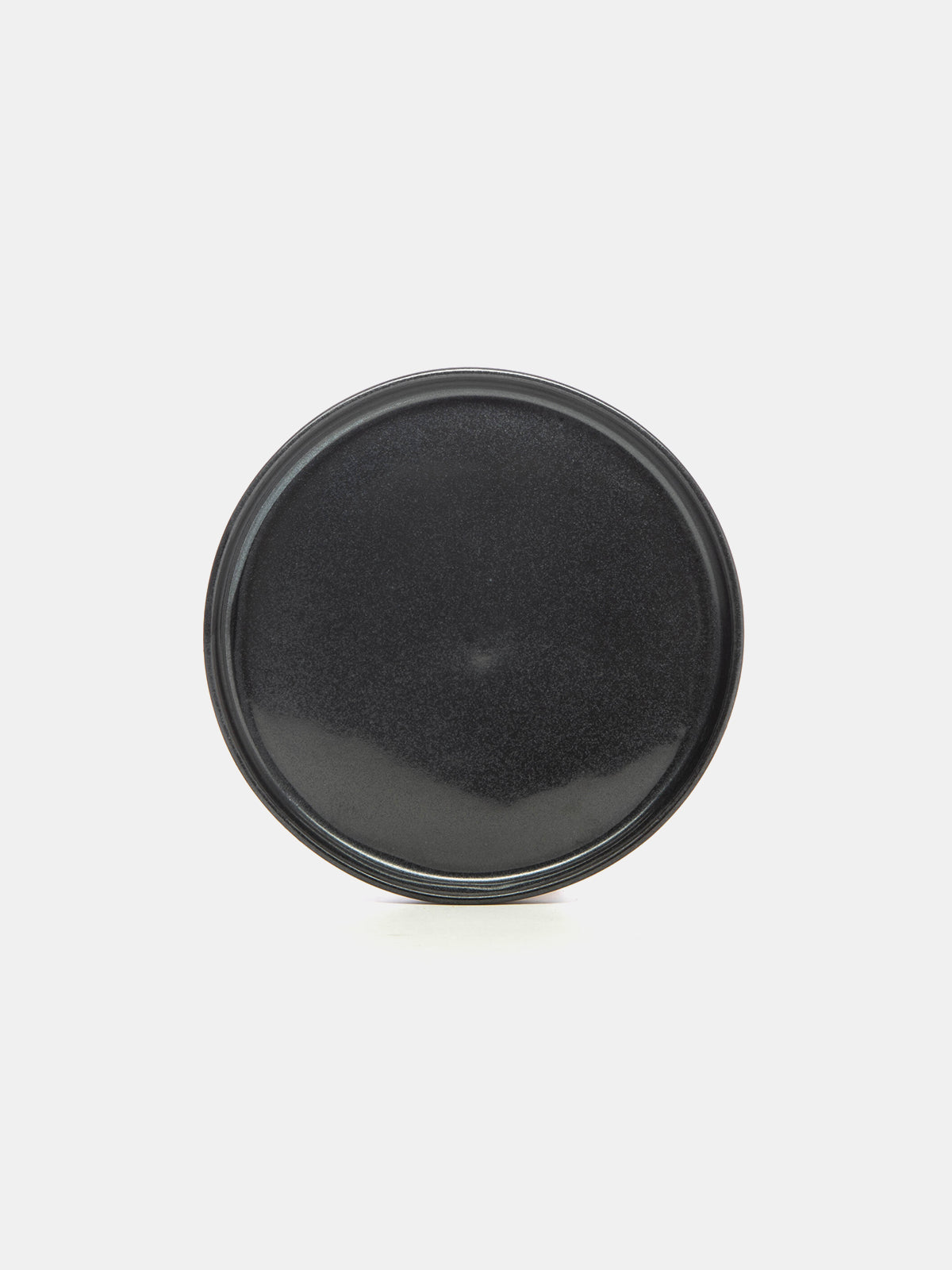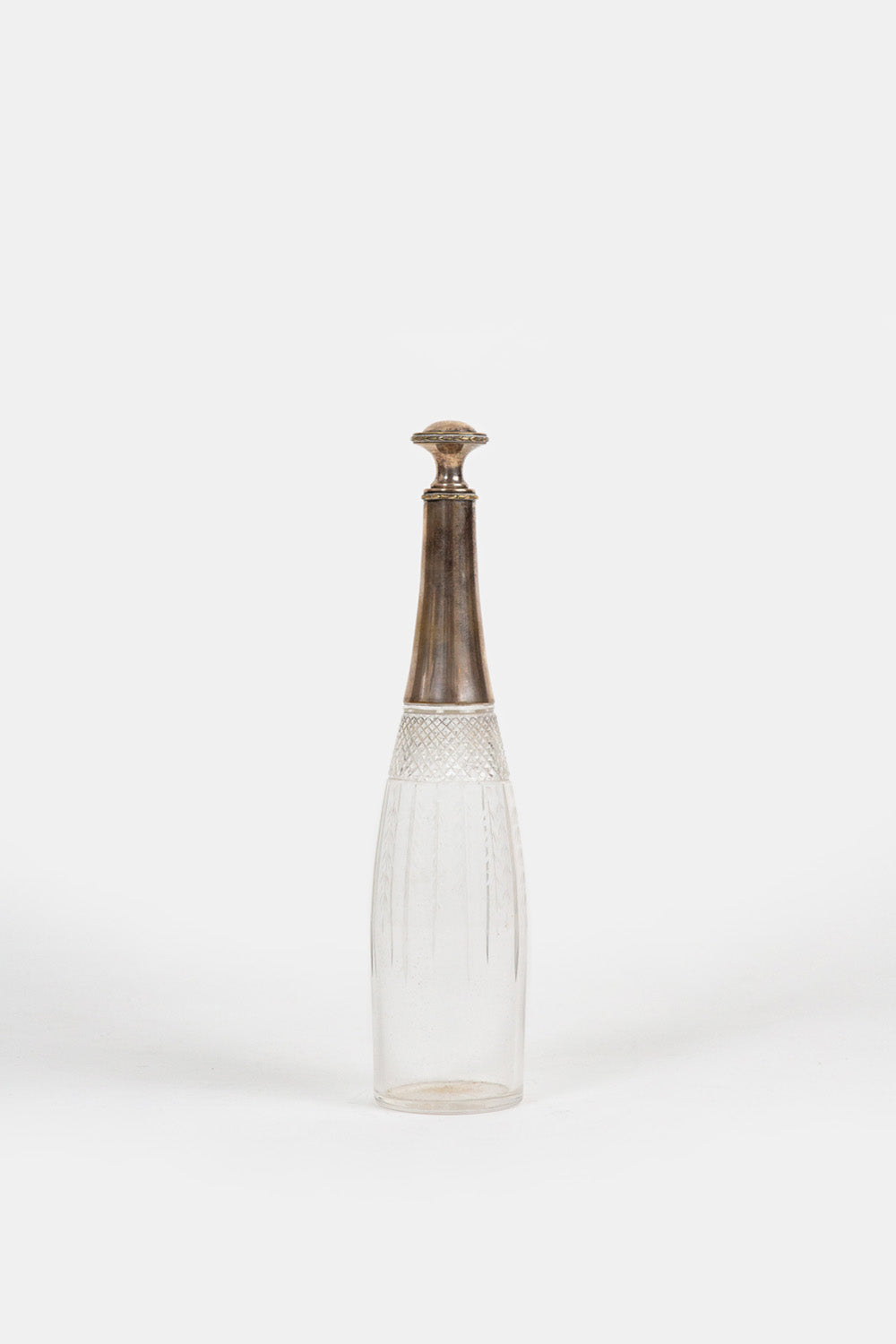Base 10 Furniture
Joshua Friedman and Lindsey Muscato are the husband and wife duo behind Los Angeles based furniture company, Base 10. Lindsey, a long time friend and past employee, has exhibited her own work in our stores before, so we are thrilled to feature this new venture for her and Josh. We took a moment to learn a little more about the processes involved in each piece -- from initial idea to final product -- and to hear how the company has evolved alongside the birth of their son, Leon. The Samos Lounge Chair, Chu-Kou Table, and Phi Stool are all available exclusively in our Marin store -- stop by and have a look for yourself!
Thanks, Base 10!

ET: Hello! I'd love to know a little more about how the two of you met.
B10: We met as students at California College of Arts and Crafts; Lindsey was studying painting and I was studying sculpture. We met when she came into the wood shop where I worked. Lindsey gives me a hard time about this story, because I helped her cut some panels for a project, but I didn't say anything in the whole interaction -- I was wearing a dust mask, and sound blocking headphones, and goggles, so she could barely see what I looked like, and she did all the talking! She thought I was a snob. But after that, we always greeted each other on campus. The next semester I asked for her phone number, and that was it. That was twelve years ago.
Over the years we've always supported each other's creative work. And our pursuits have become more and more collaborative over time. Working together feels very natural, now -- we counterbalance each other with different skills and temperaments.

ET: Tell us more about the history of Base 10 Furniture. Obviously you both have backgrounds in art, but how did the transition into furniture design/manufacturing and then eventually launching a company come to fruition?
B10: When I graduated with my BFA, I knew I wanted to work with this company Joinery Structures, which specialized in traditional Japanese timber framing. I was looking to continue to grow as a maker, to learn in an environment where I could apprentice a traditional craft.
I applied with just one table that I had made in college; I was still new to woodworking, as I had mostly been a metalworker in my art practice. Working with Joinery Structures, I had a rare and great opportunity to work with a number of incredible craftsmen over several years.
When Lindsey and I moved from the Bay Area to New York City, I became engaged in contemporary design. We fell in love with New York and were inspired by the energy, density, diversity, and pace. I did a lot of custom work there, and Lindsey became my collaborative soundboard in design and on the business end. We learned a lot in those years!
After New York, I knew I wanted to build furniture and launch a collection of our own designs. We kicked the idea around for a couple of years, especially once we moved to L.A. But when we got pregnant last summer, I knew we had to dive in! And here we are, now a family of three, beginning year two of Base 10 Furniture.

ET: Josh, how have the influences of Japanese aesthetics and techniques shaped your practice? What are some of the challenges of working in this very traditional, hand-made way?
B10: What has always resonated with me about the Japanese tradition of woodworking is the discipline that surrounds the processes and techniques. Working with Joinery Structures gave me an entry into that deeply rooted tradition. It really is a life commitment. At the core, it is always about refining the process of making things by hand. It is about seeking -- building chops, looking for virtuosity. Through repetition as a maker, you build a muscle memory; so, this mentality of discipline ultimately becomes philosophical and physical, both.
The challenge, of course, is if you're always refining, you've never arrived. It's an ongoing practice, a hunt for perfection.


ET: As individual working artists and now parents, how do you both maintain your own creative identities while also running a family business?
B10: Honestly, I think we're still figuring it all out! Our son is just five months old, so every week is a new adventure. It makes us very in-the-moment. But the work we are doing with Base 10 is so true to our sensibilities that it feels natural to be combining the growth of this endeavor with the new chapter of growing our family.

ET: Mathematics, intentional design, and minimalism are at the core of your work. Can you talk more about these guiding design principles and influences?
B10: We are interested in creating a collection of essential pieces for the home, and we want the work to be timeless and graceful. Furniture is both form and function, and while function will determine certain aspects of the design, the formal process can sometimes feel arbitrary. But we really wanted to avoid making aesthetic choices that were based just on current trends, or even traditional forms. So, we decided to outline some parameters for the work. We came to using the golden ratio to determine our measurements. The golden ratio is a mathematical relationship of proportions found throughout nature. On top of that, we applied simple geometries. This approach resonated with us and made the work feel more "pure." We're combining these very essential forms with precise joinery, and with the living material of wood. We want people to experience the furniture as effortless. But, of course, creating the impression of "effortless" actually takes a lot of work. And workmanship is also part of the concept.

ET: What does the process from initial idea to final product look like?
B10: It depends on the piece, but it often starts with us wanting to create a particular kind of furniture, like a dining chair or a side table. Then we draw to come up with a geometric framework for the piece. We do a lot of sketches. After we figure out the parameters that the furniture needs to fit within, I start to break down the geometry and begin more technical drawings; I work out the joinery as a sort of 3-D puzzle. I want people to look at the joinery and, again, feel that it's effortless, even natural to the form. From there I build scale models to get a sense of space.
Eventually I'll do a full scale drawing on a piece of plywood and build a prototype. sometimes it just works right away, but other times I have to make some changes. With our chairs, for example: they're so physical and all about fitting the body, that we have to tweak things a lot to arrive at the final design.
And, of course, it's always a process of asking, how do I build this by hand? And how do we built it in short run production?

ET: to channel Obrist for a moment...do you have any unrealized projects or future plans you'd like to share?
B10: We have several more designs up our sleeves right now. As I said, we are interested in creating the basics. So far we have designed a side table, lounge chair, coffee table, standing shelf, dining chair, foot stool, and wall shelving. Next up are our dining table and bed frame.
There are also some custom projects coming up, so we look forward to applying our Base 10 sensibility to the functionality of custom designs.
















2 comments
What a wonderful article about a very talented couple!
Ellen Demsky
Fabulous
Sandra Bramwell
Leave a comment
This site is protected by hCaptcha and the hCaptcha Privacy Policy and Terms of Service apply.